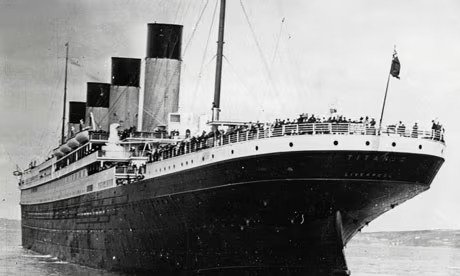Table of Contents
ToggleTop 10 Interesting and Unknown Facts about the RMS Titanic
After hitting an iceberg during it’s maiden voyage from Southampton, England, to New York City, the British ocean liner RMS Titanic drowned on April 15, 1912.
It was one of the deadliest ship disasters in peacetime history, with an estimated 1,500 people killed out of 2,224 passengers and crew. Along with hundreds of emigrants from Britain, Scandinavia, and other parts of Europe who were seeking a fresh start in the United States and Canada, the White Star Line‘s Titanic carried some of the wealthiest people of the era.

It was marketed as “unsinkable” because of its sophisticated safety features, such as remotely operated watertight doors and waterproof compartments, and was designed as a marvel of early 20th-century engineering.
Here are ten unknown facts about the Titanic that reveal its design, passengers, technology, and the mysterious circumstances surrounding its story.
1. Titanic’s Advanced Safety Measures Were Groundbreaking for Its Time
With features like remotely operated watertight doors and watertight compartments, the Titanic was an engineering marvel. There were sixteen compartments in the ship’s hull, each of which could be sealed off if it started to absorb water. Despite these cutting-edge engineering, the Titanic was considered unsinkable mostly due to the tragically disproven idea that not all compartments would ever flood simultaneously.
2. There was more myth than truth to the “Unsinkable” claim.
Despite what many people think, the Titanic’s owner, White Star Line, never formally marketed it as “unsinkable.” Following the ship’s design release, this moniker became popular due to hearsay and press coverage. The public’s perception of the Titanic as an unbreakable ship was heightened by the press’s exaggerated statements, which further contributed to the shock and sadness surrounding its sinking.
3. The Titanic’s Orchestra Played Until the Very End
The story of the eight-member orchestra that performed music on deck while the lifeboats were lowered is among the most moving accounts of the sinking. During the confusion, the musicians, under the direction of bandmaster Wallace Hartley, tried to soothe the passengers. Their bravery and dedication to providing consolation to others during calamities have been hailed as admirable deeds.
4. The RMS Olympic, the sister ship of the Titanic, Had a Notable Incident
There were three “Olympic-class” ships, including the Titanic. Before the Titanic’s first voyage, its sister ship, the RMS Olympic, suffered a serious accident with the British warship, HMS Hawke. Even while this episode had no direct bearing on Titanic’s fate, it brought to light the risks that even the most technologically sophisticated ships of the era faced, highlighting the perils of ocean travel in the early 20th century.
5. There were still seats available when the last lifeboat was launched.
A lack of organized evacuation, fear, and misunderstandings caused numerous lifeboats to depart the Titanic only partially loaded. Despite having a capacity of 65, lifeboat 7, the first to be lowered, could only accommodate 28 people, and even the final lifeboat, which was launched with seats left open. Inadequate lifeboat use contributed to the terrible fact that only 705 of the 2,200 people on the Titanic survived.
6. A Rare Near-Miss During Departure Foreshadowed the Catastrophe
The Titanic just avoided running into the docked SS New York as it sailed out of Southampton. The New York was drawn toward the Titanic by the powerful suction caused by its enormous engines, but the crew of the Titanic acted quickly to prevent a catastrophe. This occurrence is interpreted by some as a warning of the impending catastrophe on the high seas.
7. The Richest Passenger, John Jacob Astor IV, Met a Tragic End
One of the richest men in America, John Jacob Astor IV, was on board the Titanic with Madeleine, his young, pregnant wife. Astor demonstrated chivalry in the face of death by staying behind while assisting his wife in boarding a lifeboat. His personal items, including a gold pocket watch, helped identify his body when it was later recovered. Astor’s passing highlighted the tragedy’s indiscriminate nature and signaled the loss of an American icon.
8. A large number of crew members lacked lifeboat experience
The Titanic’s crew found it difficult to oversee the evacuation since they were mainly unprepared for lifeboat training and emergency procedures. Crew members had not received adequate training, and the ship’s lifeboat drills had been canceled on the day of the trip. With many passengers uninformed of the evacuation protocols, this lack of planning made the situation worse as the sinking ship plunged into panic.
9. Marconi Wireless System Was Essential and Revolutionary
In 1912, the Titanic was one of the few ships with a Marconi wireless telegraph, which enabled passengers to communicate with loved ones on land. As the Titanic fell, operator Jack Phillips put in endless hours transmitting SOS signals—then a recently popularized distress call—across the Atlantic. The majority of the passengers were not saved by the adjacent ships, despite Phillips’ best attempts.
10. The Legacy of the Titanic Still Influences Maritime Safety Regulations
Significant changes were made to international maritime laws after the Titanic accident. In order to address the lessons learned, the SOLAS (Safety of Life at Sea) Convention was passed in 1914 and mandates that all ships have enough lifeboats, conduct frequent lifeboat training, and have radio communications available at all times. Titanic’s enduring impact on contemporary sea transport safety is evidenced by the fact that these procedures are still included in maritime law today.

